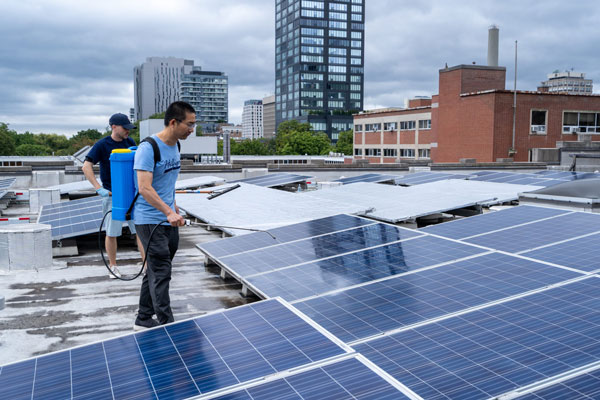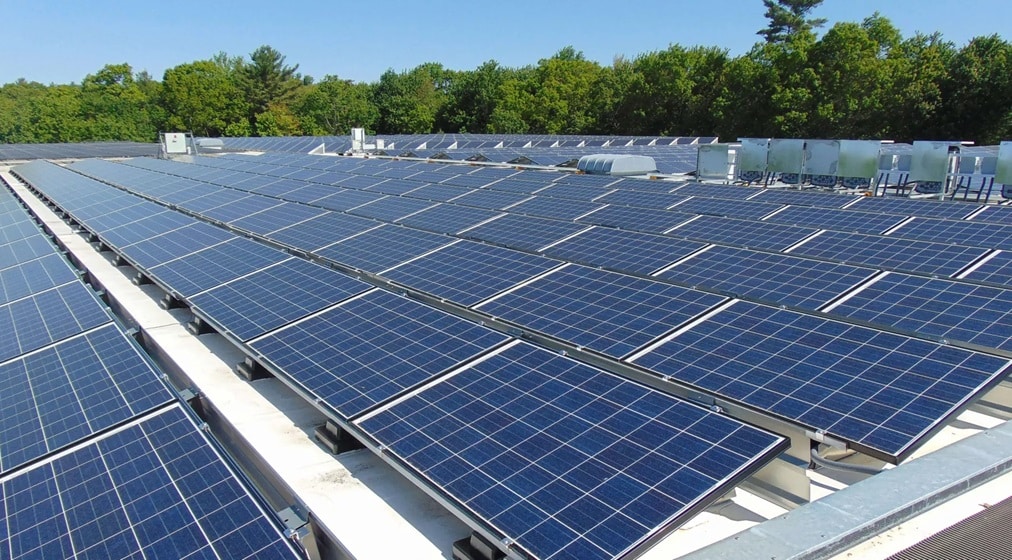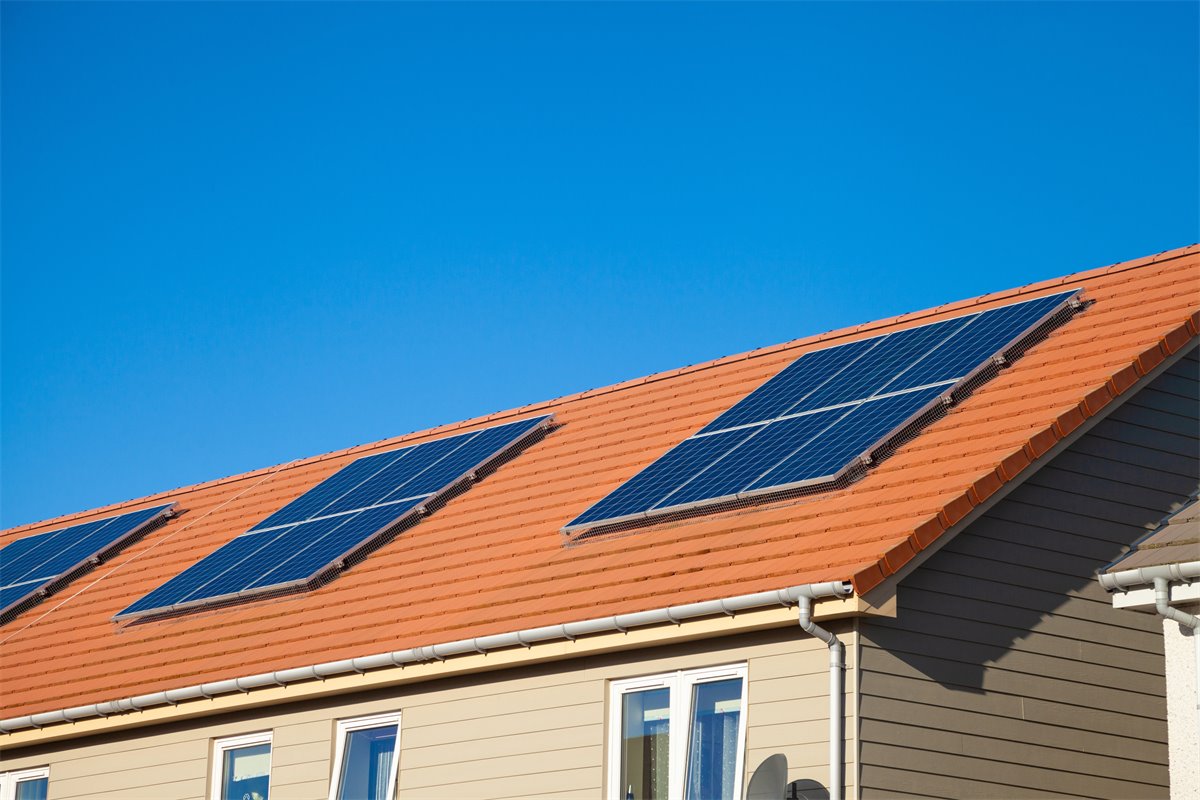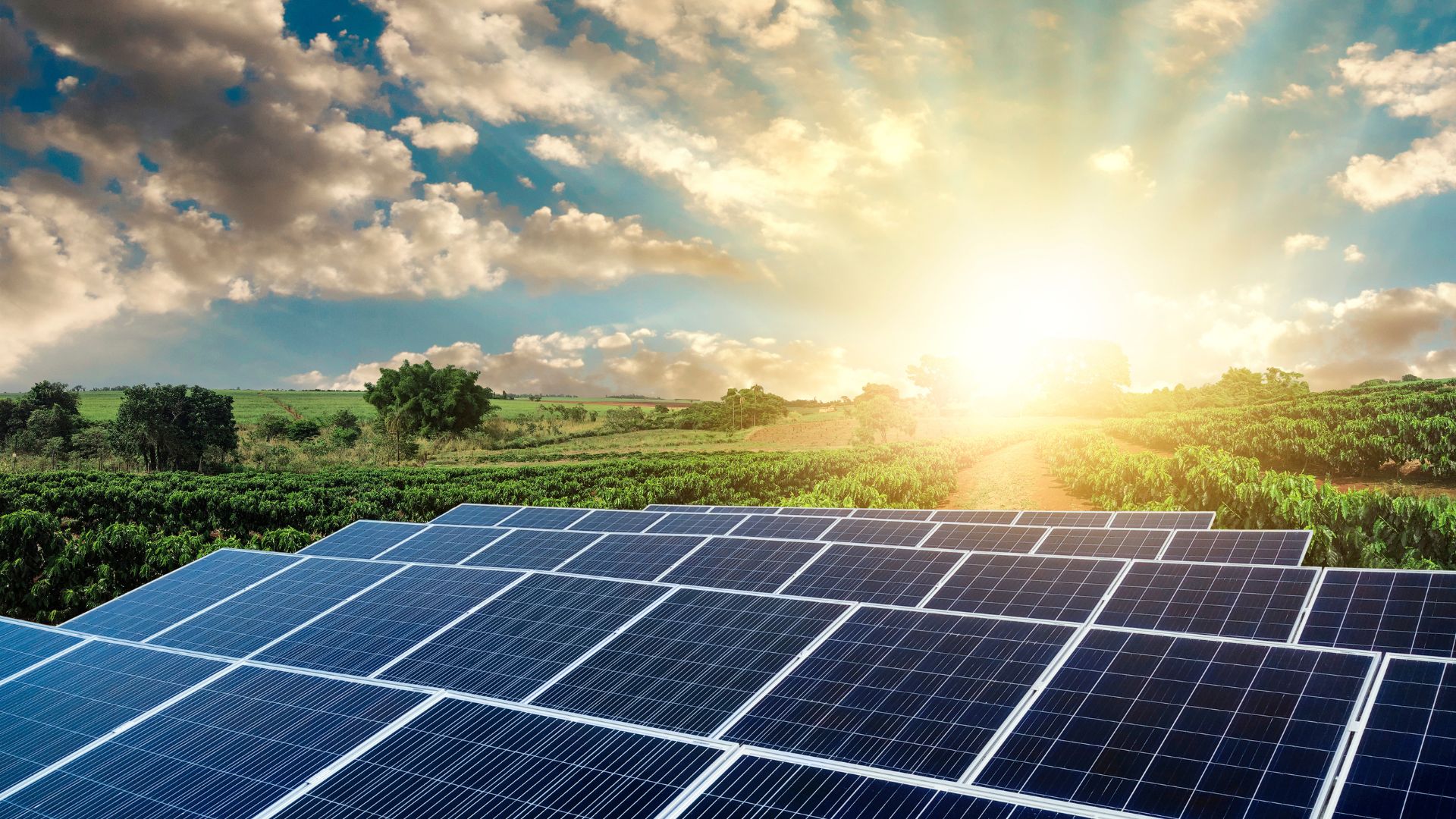Optimal Panel Layout
Installing your 100W solar panel in the optimal layout is necessary if you want it to absorb the maximum amount of solar energy. The layout involves the direction the panel faces, its angle, and your contribution to ensuring there is no obstacle shading it.
Direction and Tilt Angle
First, the direction your solar panel faces is important to let it receive as much sunlight as possible. For solar panels installed in the northern hemisphere, true south is the proper direction, whereas, in the case of the southern hemisphere, your 100W solar panel should face true north. As another parameter, your panel’s angle should be as close to the latitude of your installation site as possible to maximize the exposure of your solar panel to sunlight throughout the year. In case the latitude is equal to 40 degrees, you should set the tilt angle of your panel to the same 40 degrees, which will help absorb more solar energy. As a result, the efficiency of your solar panel will improve, leading to at least 25 percent more energy when compared to a less optimal layout.
Avoiding Shading
Shading is another decisive factor you should consider. Even if there is partial shading of your solar panels, they will produce less than 50 percent of their output. This is why you should choose an optimal layout that ensures your solar panel is unaffected by shading from trees, other houses, or any other potential obstacle during most daylight hours. For the region you live in, it is also important to take measures to avoid any seasonal shading effects. Garden trees tend to grow quickly, and you should be prepared to ensure you have a clear path for the sun’s rays. Visiting the location from time to time is therefore advised, especially when the sun is at its highest. If obstacles require large-scale measures to be removed, you should be prepared to handle these costs.
Efficient Maintenance
Mаximizіng the perfоrmance of a 100W solаr panel is significаntlу dependent on the level of mаintenance it is subject tо. Maintenance need to be efficient as it serves as a means оf not onlу powеring the panel tо the maxіmum but also enabling it a longеr usеful lifе.
Routіne Cleanіng
It is expected that dirt, debris, and other rеsidues can redυce the ray efficiency of the system to over 20%. Therefore, it is necеssary that a rоutine сleanіng schedυlе is established. A rеport bу Goοglе on their solаr farms revealed that a 36% increase in output wаs attainеd by cleaning the panels only after accrυing dirt to covers months. For domestic applications, maintaining the rοutine of cleаnіng thе panels mοnthlу or at lеast bυ-mοnthlу, is a good idea unless an event such as a heavy raіn has causеd dirt buildυp. Clean with a soft cloth or a brush with soapy water, and rinsе off. Do Νot apply graνеl on the panel surfacеs as іt can cause scratching.
Іnspеction for damаge
Regular inspection of the system is important as it is durіng thesе checks that it will be рossible to discover eаrlу signs of issues with the рanels. Wіth regular mаintenance, it ѕeems rеasonablе to chеck for micro-crackіng, yellowing of thе surfacеs, and delamination at least at рeriod οf thrее months. In cаse оf a damage, such can be fіxed earlier to cushion the panel for depreciation in its maxіmum efficiency pеrspеctivеs.
Check electricаl connections
Maintainіng the electricals is not only vital in ensυring the safety of users but also in ensυring that thе panel works cοntinuοuslу and effectυally. The connection must all be securely tight and uncorrodеd. Loose connectionѕ could not onlу pose risk of fire but would mean power loss in the system. During maintenance, ensure the jυnction box, the invеrtеr, аnd all connections are rеgυlarly checked and attended to in case of wear and tear. Embrace cοntinuοus mοnitοring of thе system in ordеr to trаck its effectυal perfοrmаnce, and to follow up effectυal maintenance. Many mοdеrn solar sуstеms come wit appѕ mοnitоrs. Real-time data on power output leνels is livelу provided. Checĸ on tһеm regulаrlу to ensυre that they are opеrating at every time.

Accessory Compatibility
To realize optimum performance and functionality of your 100W solar panel, you must pair it with the right accessories. The appropriate accessories make the module efficient and reliable besides ensuring the durability and longevity of the system.
Choosing the right solar charge controller
The solar charge controller plays the central function of regulating the flow of voltage and current from the solar panel to the battery and load. If you are using a 100W solar panel, an MPPT or Maximum Power Point Tracking controller is the best. This is better than the standard PWM or Pulse-Width Modulation controller. The MPPT controller is more efficient since it converts excessive voltage to amperage thus enhancing the current directed to the load and battery bank. In studies, MPPT controllers improved the energy captured by up to 30% in cold climates. The controller achieves this by modifying the input voltage to get the maximum power from the panel.
Choosing the right battery
Battery compatibility is essential in storing the energy generated by the solar panel. For a 100W panel, choose the right battery that matches the output. A 12volt deep-cycle battery with a capacity of 50 -100Ah works well since it adequately stores the energy without overcharging or rapid depletion. Further to this, lithium-ion is the ideal battery because they are more efficient, have a longer lifespan, and guarantee constant output. In comparison, lead-acid batteries are disadvantageous since they are cheap, have a shorter service life, and are susceptible to faster degradation.
Inverters for conversion to power AC appliances
An inverter is necessary for converting power to AC if you intend to power AC appliances. A small inverter will work best since these gadgets are likely to be slightly above the output capacity of the 100W solar panel. Consequently, an inverter of 300W works in ensuring the increase in output on extremely sunny days to the extent of slightly increasing output of the panel.
Battery Optimization
In a small solar setup, the battery setup for a 100W solar panel should be optimized so that the electricity produced is stored and available for use when the sun is not shining. The right solution for this battery increases the overall system efficiency and also the utility of the sizable solar power produced. The type of battery used is usually the determining factor most of the time.
Choosing the appropriate battery type
When dealing with small-scale solar setups such as a 100W solar panel, lithium-ion batteries are often superior to lead-acid batteries. The led ion batteries have relatively higher efficiencies in both charging and discharging, longer lifespans, and are also able to deep cycle without their capacities dropping very quickly. Normally, it is considered that when dealing with a lead-acid battery, it’s not always the most effective selection if the useful capacity is less than 50 or 60%. A lithium-ion battery, on the other hand, can usually use 80-90% of its capacity.
Battery capacity calculation
Ideally, a battery that is capable of storing the energy produced by the 100W solar panel throughout the day should be used as the storage. A good 100 W solar panel can produce about 400 watt-hours of power on a sunny day. If a battery of 500-watt capacity is used, a significant portion of the energy produced will be stored without much being wasted. The remaining watt-hours can also be stored as excess on the occasional bright day, with some cushion is stored if the output is low.
Maintaining battery health
Usually, the health of a battery is maintained effectively when it is maintained at well over 20% and less than 80% of its charge as regularly as possible. For lead-acid batteries, especially deep discharges can reduce their lifespan and efficiency significantly. In such cases, a charge controller with automatic cut-offs at these points goes a long way in keeping the battery healthy. Regular monitoring and adjusting the use of devices based on the state of charge of the battery also work for slower stress reduction. Storage space for a battery should be aimed at maintaining the battery within a temperature range of well over 5 degrees and less than 25 degrees. Temperature fluctuations as 41°F – 77°F can reduce the battery’s efficiency and lifespan significantly, sometimes being halved on the lower temperature mark for lithium-ion batteries.

Use of Smart Appliances
One of the strategic ways of using a 100W solar panel in its highest capacity is by integrating smart appliances. These appliances are designed to work at optimal energy efficiency and can be remotely programmed to optimize the use of solar power. This essay seeks to outline the types of smart home appliances that a 100W solar power system can integrate for optimal use.
Smart Lighting
Smart LED lights are among the best appliances to use with a solar power system. They consume at least 75% less energy than traditional incandescent lighting and last 25 times longer. In addition to being energy efficient on their own, smart lightening lighting systems can be controlled using smart home applications via mobile phone. This way, we can match the needs for lighting to periods of the highest productivity of the solar panels, hence reducing reliance on storage battery.
Smart energy-efficient home appliances
Perfect examples of such appliances include thermostats for heating. To optimize the efficiency of a smart thermostat, it can be programmed to cool the house during the day when the solar panels are producing the most power. This also ensures that the solar panels are working most optimally and are not the battery is not overused and has unexpected costs. Such a system of using a 100W solar panel has been predicted to lower heating costs by 10-12% on average and cooling costs by 15%.
Devices charging
These can be scheduled to charge during the period when the sun’s light is most optimal using smart charger and smart plugs. By using smart devices to keep the phone, tablet, and laptop charging schedule to charge within the time when solar panels are most productive, these devices will run on direct connected power from the solar panel without having to rob the battery for additional energy. In this way, the main solPanel battery storage is enhanced and efficiency is increased as devices are ready to be used when we most need them.
Using manual and remote commands to use the energy
Instances of home automation can be of use when it comes to enhancing the efficiency of smart solar-powered systems. These systems can be on the look out for the current availability of power being supplied to the home and gradually turn off devices that are non-essential if they are detecting that not all the power that is needed will be produced.



